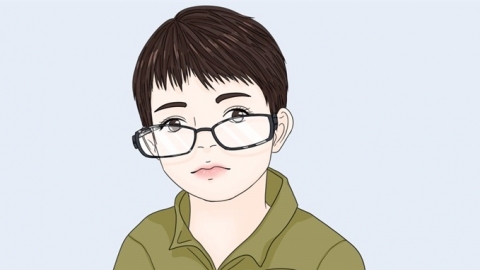How to gradually recover vision in nearsightedness
Generally, myopia may be caused by excessive eye use, developmental factors, deficiency of trace elements, genetic factors, or diabetic retinopathy. It is recommended to seek timely medical attention, identify the cause, and then proceed with recovery through general treatment, medication, or surgical treatment under the guidance of a professional physician. A detailed analysis is as follows:

1. Excessive Eye Use
Prolonged overuse of the eyes can keep the eye muscles in a constant state of tension, leading to decreased accommodative ability and making it difficult for the eyes to adjust to viewing distant objects. Over time, this may elongate the eye axis, causing or worsening myopia. Symptoms may include dryness, eye discomfort, and headaches. It is recommended to take regular breaks, use eye-protecting lamps to reduce screen glare, and apply warm compresses to relieve eye dryness.
2. Developmental Factors
If the body's development is incomplete—for example, infants often have smaller eyeballs and are typically farsighted—the eye axis gradually lengthens with age and usually develops normally by adolescence. This is generally considered normal, but if discomfort occurs, prompt medical attention is advised.
3. Deficiency of Trace Elements
Myopia may be related to deficiencies in trace elements such as lutein and vitamins. A lack of these elements can weaken immunity and hinder the supply of necessary nutrients, resulting in decreased accommodative ability and potentially worsening myopia. Maintaining a balanced diet and adequate nutrition in daily life is recommended.
4. Genetic Factors
Myopia has a certain hereditary tendency, which may affect the structure and growth of the eyeball, making offspring more prone to having a longer eye axis. This causes light to focus in front of the retina, resulting in myopia. Typically, there are no specific accompanying symptoms, but vision deterioration becomes increasingly noticeable with age. It is recommended to wear appropriately prescribed glasses or contact lenses to correct vision. Laser refractive surgery may be considered when necessary, under a doctor's guidance.
5. Diabetic Retinopathy
Diabetes is a group of metabolic disorders characterized by chronically elevated blood glucose levels. Diabetic retinopathy can cause retinal blood vessels to leak or become blocked, leading to retinal hypoxia and the growth of new blood vessels, which can impair vision. Symptoms may include blurred vision, floaters, and visual field loss. Strict control of blood glucose levels is advised, along with medications such as metformin hydrochloride sustained-release tablets, glipizide tablets, and acarbose tablets. Laser therapy or vitrectomy may be necessary in some cases.
When treating myopia, individuals should choose suitable treatment methods according to their own conditions. At the same time, maintaining healthy lifestyle habits and a positive mindset is important.




